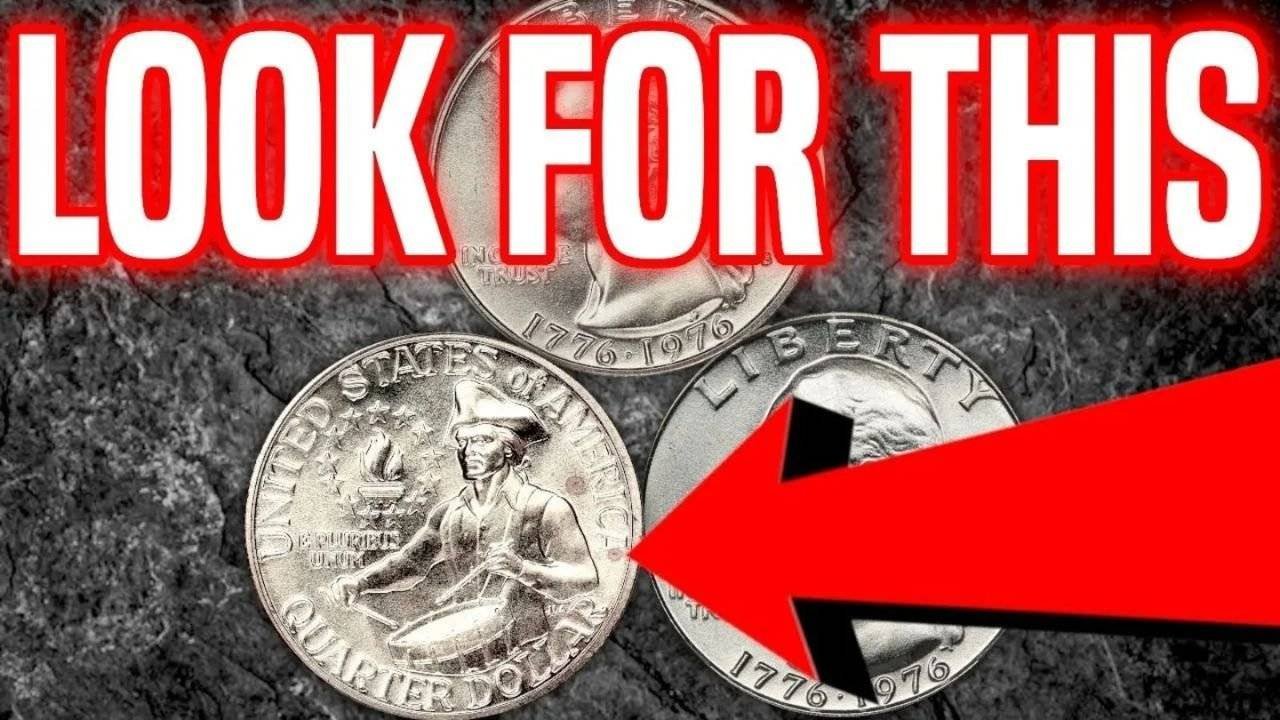Let’s be honest—how often do we really take the time to inspect the change rattling in our pockets or gathering dust in a drawer? Probably not as often as we should. But what if one of those ordinary quarters is actually a treasure? This isn’t a scene from a movie or a far-fetched fantasy. It’s a real possibility, especially if you come across a Rare Bicentennial Quarter. These coins are not just pocket change—they are small, tangible pieces of American history and could be worth a surprising amount.
That simple quarter you got back from your morning coffee might be one of the most coveted collectibles in the coin-collecting world. Let’s dive into the fascinating story behind the Rare Bicentennial Quarter—a coin minted to celebrate America’s 200th anniversary and now a hidden gem in pockets, piggy banks, and coin collections.
A Coin with a Story: Celebrating 200 Years of American Independence
In 1976, the U.S. Mint marked a historic milestone with a special commemorative series of coins, including a quarter, half dollar, and dollar, celebrating the nation’s bicentennial. The quarter from this series stood out instantly. Instead of the usual single date, the Rare Bicentennial Quarter proudly displays dual dates—“1776–1976”—right on its face. This wasn’t just a coin; it was a powerful tribute to America’s journey and spirit.
The coin’s reverse side is equally iconic. Designed by Jack L. Ahr, it features a colonial drummer boy with a torch, surrounded by thirteen stars representing the original colonies. This design isn’t just patriotic—it’s visually striking, turning the coin into a proud symbol of American heritage.
These quarters were minted in three locations:
- Philadelphia (no mint mark)
- Denver (with a “D” mint mark)
- San Francisco (with an “S” mint mark)
Here’s the twist: some of the San Francisco quarters were struck in 40% silver instead of the usual copper-nickel blend. These silver versions were primarily made for collector sets and weren’t meant for everyday circulation, making them especially valuable.
Why the Rare Bicentennial Quarter is a Numismatic Star
You might wonder—how can a coin produced by the millions be worth thousands, or even millions in rare cases? The answer lies in the details: minting errors, condition, silver content, and a little bit of luck.
Also Read – The Lincoln Wheat Penny Valued at $530K, Still in Circulation
1. Minting Errors: The Beauty of Imperfection
Ironically, imperfections make some Rare Bicentennial Quarters exceptionally valuable. Coins with minting errors are scarce and highly sought after. Common errors include:
- Double strikes, where the coin is stamped twice, causing overlapping images.
- Off-center strikes, with part of the design missing or skewed.
- Die cracks or misprints, where flaws in the mint’s stamping tools show as cracks or odd markings.
Such mistakes make these coins unique treasures worth thousands.
2. Pristine Condition: Uncirculated and Untouched
The condition of a coin dramatically affects its value. Uncirculated Rare Bicentennial Quarters—those never used in daily transactions—retain their original shine and details. These coins often earn high grades from professional services like NGC or PCGS, pushing their value even higher.
3. The Silver Advantage: 40% Silver Content
The San Francisco mint’s 40% silver quarters are prized not only for their design but because of their precious metal content. While regular quarters weigh about 5.67 grams, these silver versions weigh slightly more, about 5.75 grams, due to the metal. Depending on market conditions, these coins can range from $10 to $50 or more, especially if uncirculated or featuring errors.
Current Market Value: How Much is a Rare Bicentennial Quarter Worth?
- Circulated quarters typically hold their face value—around 25 to 50 cents.
- Uncirculated examples can sell for $100 to $500, depending on condition and grading.
- 40% silver versions start around $10 but can go higher with good condition or errors.
- Error coins may fetch several hundred or thousands of dollars, depending on rarity.
- And in the rarest cases, pristine and unique Rare Bicentennial Quarters have sold for close to a million dollars.
Are Rare Bicentennial Quarters Still in Circulation?
Surprisingly, yes! Even nearly 50 years after they were minted, these quarters still turn up in everyday change. Many people overlook the dual date “1776–1976,” unaware that their pocket change might hold a valuable Rare Bicentennial Quarter.
How to Identify a Rare Bicentennial Quarter: A Simple Collector’s Guide
- Check the edge: Standard quarters show a copper stripe, but the silver versions have an all-silver edge.
- Look for the “S” mint mark: This indicates San Francisco minting, possibly the silver proof or collector’s coin.
- Use a magnifying glass: Inspect for minting errors like double strikes, die cracks, or off-center designs.
- Weigh the coin: A slight difference in weight can signal silver content.
- Protect your find: Store it safely in a protective sleeve or case.
Final Thoughts: History and Value in Your Hands
The Rare Bicentennial Quarter is more than just currency—it’s a celebration of American heritage, a collector’s dream, and a reminder that everyday change can hold extraordinary surprises. Whether you’re a seasoned coin collector or just curious, the next quarter you receive could be a priceless piece of history waiting to be discovered.
So next time you get change, take a closer look. You might just be holding a Rare Bicentennial Quarter worth far more than its face value—and maybe even a small fortune.
Some Important Link
| Telegram Group | Click Here |
| WhatsApp Group | Click Here |
| Home Page | Click Here |










